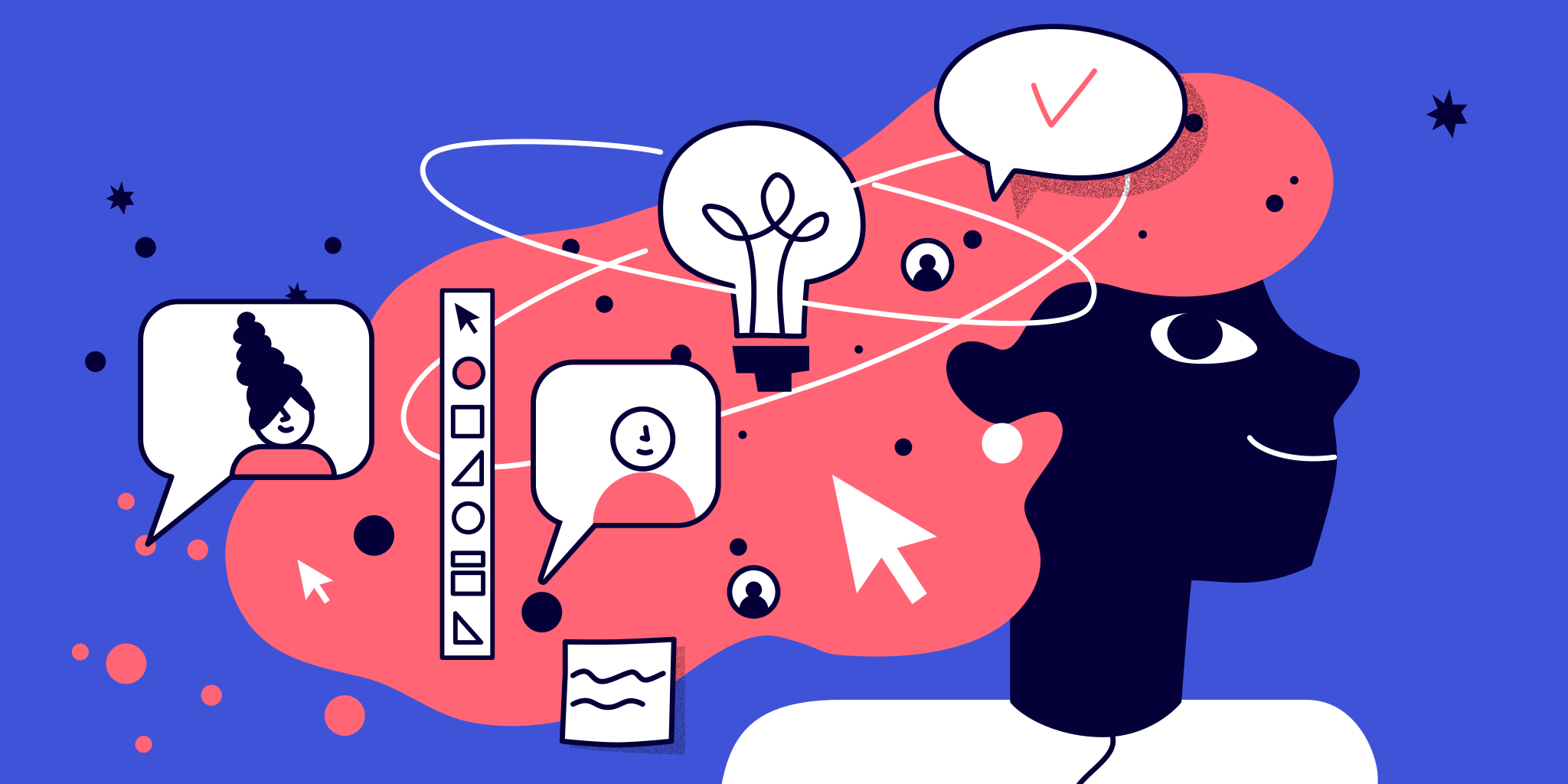This is a guest post by Ed Vinicombe, a founder of UXClub.com.
Who’d have thought that designers could share, collaborate and work so harmoniously together on one project?
Having only started working at Clearleft, it’s amazing to learn that we are always trying to discover new ways of working that will help us work more efficiently and to hopefully have fun along the way.
Design relays
Most recently, we experimented with a ‘design relay’ (as written about on the Clearleft blog) as a way to help us collaborate on a project together but in a very limited time frame. As our designers are typically off/on client projects, it’s hard to get the time to devote to smaller internal bits of work, so instead we came up with the idea of a relay approach to the project. One designer kicks it off and passes the file along to the next designer to riff on the previous idea or break away into a completely new direction. Lots of designers. Lots of ideas!
This method of collaboration seemed fitting when our CTO, Jeremy Keith came to us with an idea of launching a new conference, Patterns Day, which needed a quick website and some branding.
Project goals
Our aim was to provide Jeremy with a style direction he could use to put together a website himself. We didn’t want to spend forever on this — just an hour each to bash some ideas out quickly. Things like colour, typography, texture and general aesthetic.
Jon
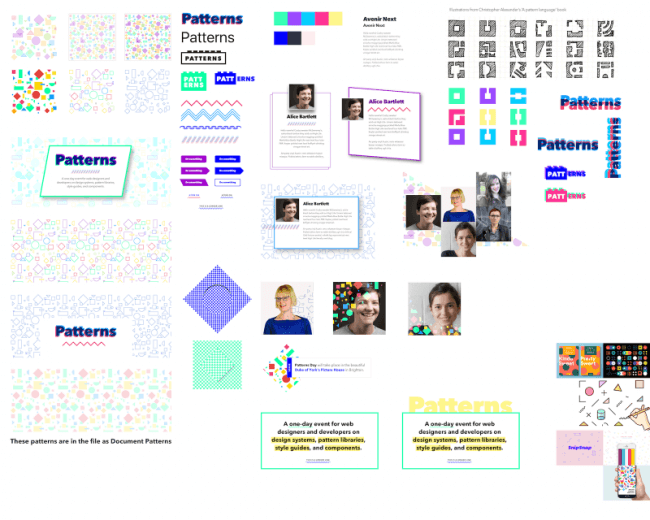
Jon kicked things off with some loose exploration into logos, colors and typography. Some of the workaround background patterns made it onto the final site as well as the typeface, Avenir.
James G
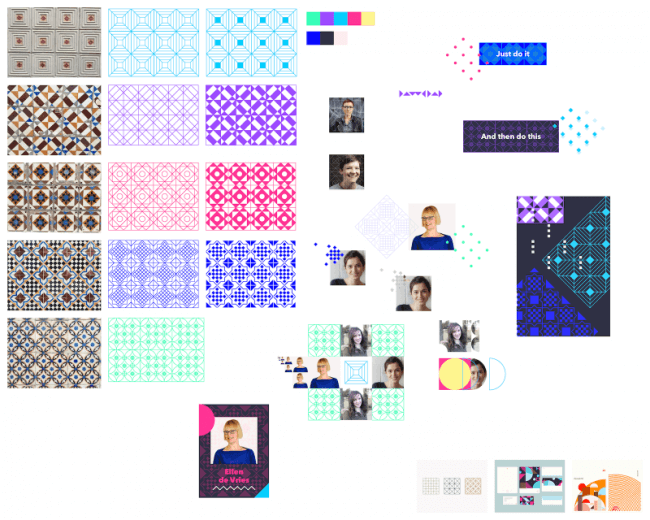
James G was next up. James continued with a lot of the themes that Jon has started along with some exploration around patterns.
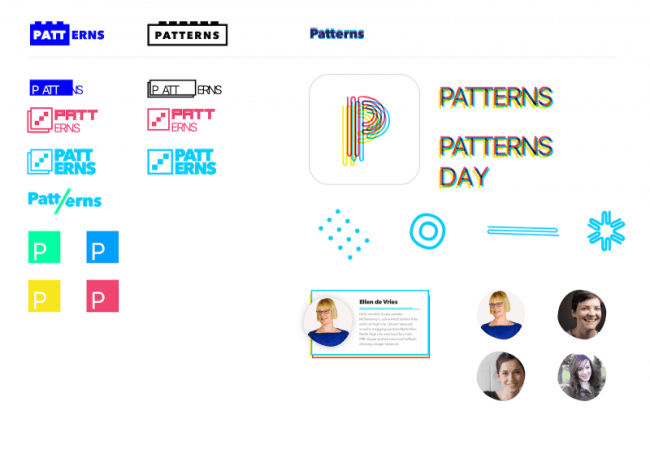
I was next up and decided to pursue some of the original ideas around the logo that Jon had previously experimented with. I wanted to try some ideas around multiple layers on top of one another with varying transparency effects. I think it came off pretty nice, but it wasn’t exactly what Jeremy was looking for.
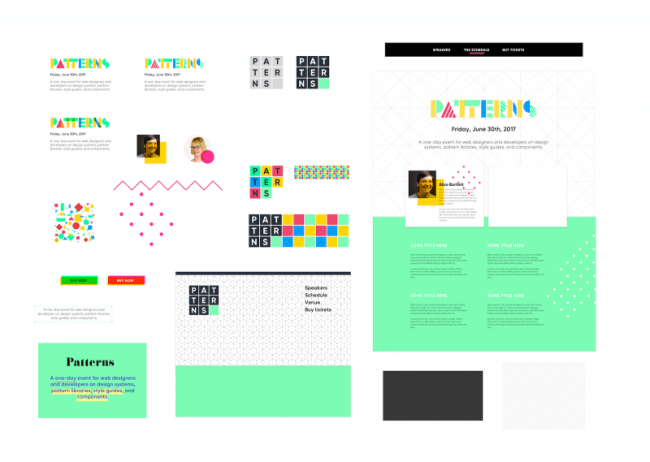
Lastly, it was over to James. One of the logo concepts you can see here made it into the final site along with the strong, neon green color to add to the color pallette.
Benefits of design relays
Let’s recap for a moment the benefits of conducting this exercise.
- Lots of ideas to work with
- Wide variety of ideas from different designers
- Done in a quick time frame
- Fun and collaborative way of working
- Great personal challenge
The obvious benefit of this collaboration technique is that it produces a lot of ideas quickly, which, in this instance, was the aim of the project. On larger pieces of client work, I can imagine this technique helping break through creative barriers and providing different approaches to design problems.
Disadvantages of design relays
The benefits are obvious but what about some downsides to working this way?
- Unfinished ideas
- Not enough time to explore an idea thoroughly
- No sense of ownership over a project
The fact that these ideas are unfinished is the whole point. However, unfinished ideas are not much use if you don’t have the time to finish them off! In this case, our brief was to provide a loose direction for the website and branding but for larger client work these loose ends might not be useful to the client at all. In fact, it might just make them pretty mad.
Finding creativity in pressured environments
Working in isolation can occasionally be counterproductive when trying to find the path to creativity and problem solving. I, for one, tend to suffer from blank canvas syndrome, so this was a unique test for me to test myself.
I thought that having a short deadline to work within was going to be a challenge, but instead I really enjoyed the pressure of delivering ideas quickly. It made me focus on the task far more and enabled me to be far more ruthless with ideas. If I felt that something wasn’t working, I would turn my attention to something else quicker than I normally would.
Not every designer works the same way and, in fact, the majority of designers I know prefer working in a far more relaxed, open environment where they have the capacity to explore ideas at their own pace. There’s absolutely nothing wrong with working like this — in fact, this is how I work 90% of the time. When it comes to working on my own projects I could be there all year designing something until I’m happy with it only to tear it up once I’m finished and start again!
It’s always good to be tested in situations where you’re not too familiar or comfortable in. This is what helps me improve as a designer everyday.
Design fatigue
For more complex client projects that require a lot more thought and focus, creative fatigue can begin to set in. There is always a tendency to scurry down the rabbit hole on ideas and not have the awareness to stop and think about different approaches to a problem.
This is especially poignant when you are in the early stages of any creative project where the goal is to explore as many divergent concepts as you possibly can. This can be extremely challenging if the client has already given you a certain direction to pursue or you already have a hunch you’d like to follow yourself.
Much like blank canvas syndrome, creative fatigue on a project can be just as maddening.
When I get to that point I tend to try and step back from the computer screen and resort back to paper and pen as it helps clear my mind and focus on the larger picture. Go back to the route of the problem — what are we trying to solve?
This is where design relays can have a massive impact. Trying a collaborative technique like this might give your project that much needed injection of fresh ideas when it feels like all other creative avenues have been exhausted.
Conclusions
This was the culmination of our work and considering how much time we had to work on it — I think it’s come out great!
Of course, if we had a little more time we could begin to work on the smaller details and finesse it, but with the time we had available to us, we’re really happy with the process and outcome.
This technique is not new. Layer Tennis has been around for years which is essentially the same concept, but instead of working against each other you’re using each other’s ideas as inspiration. I like that spin on it.
The pressure to deliver something is a real buzz for me and actually makes me work harder and better. There is also a subliminal pressure to produce something that your colleagues can work from and there is no greater pressure than that of other designers. Especially ones that you work with!
On the whole, the design relay was a lot of fun and I wouldn’t hesitate to use this collaboration technique for future bits of work.
Go and try it!
About the author

Ed is a Founder of UXClub.com UXClub.com is an on demand video training platform covering every aspect of user experience design. Use the code ‘RTBUXC2017‘ to get 25% off annual and monthly subscriptions.

